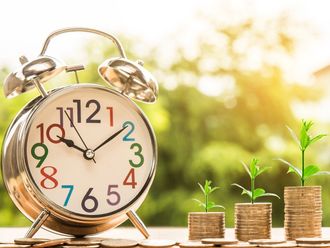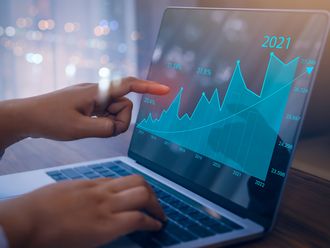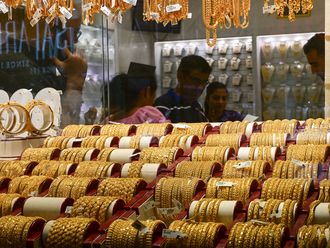
Dubai: With interest rates now expected to not rise as much worldwide, can you benefit if you lock up your money as ‘fixed deposits’ (FDs)? If yes, what type of FDs? And, how do I choose the interest rates?
When the world’s largest economy, the US, this week signalled slower rate hikes for the first time since the pandemic, why was such a move important for global markets and your investments?
This move by the US meant that only a few more hikes in interest rates were expected in early 2023, and likely fewer and significantly smaller moves than we've seen in 2022. The markets worldwide are broadly on the same page with the US's assessment, as it has the trend historically.
Similarly, in India, four consecutive rate hikes by the Reserve Bank of India (RBI) within the last 8 months has changed the investment appetite among NRI (Non-Resident Indian) savers, particularly when it comes to investing in ‘fixed deposits’ (FDs) in India.
Should you put money in FDs when interest rates are rising?
For the past couple of years, deposit rates have been falling consistently, and the interest rates available on fixed deposits with popular banks range from approximately 5 per cent to 7.5 per cent. This meant that if you invested in fixed deposits at the start of the year, you will be earning higher returns.
Since then, interest rates have been rising, and if you book your fixed deposit (FD) now and the rate rises later, you will end up losing interest on your FD. However, up until last week nobody knew for certain how long the interest rates will keep rising and what could be the peak rate.
So even though a rate hike is good news for depositors, it comes with a fair share of predicaments. Even though the direction of interest rates has reversed again, however, nobody is sure where the rates will finally reach and how long it will take for interest rates to peak.
If you wait longer to book your FD for a higher rate you will end up losing on current growing rates and if you book long-term FDs after only a few hikes, you may end up at the losing end if the rates keep growing later.
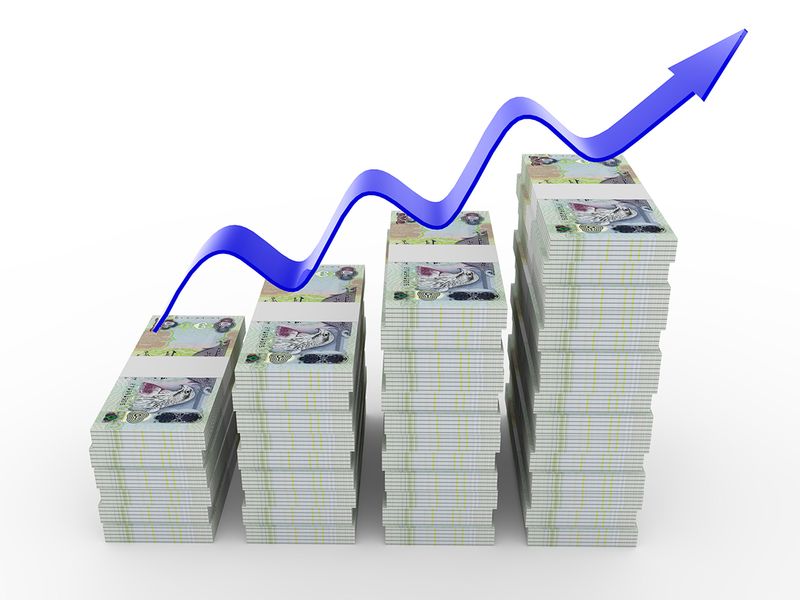
Investing in FDs depends on when you hope to profit
“It makes sense to start an FD when the interest rates are reversing [i.e. from rates that were dropping to rates being hiked consistently],” explained Shehan Abbas, a Dubai-based banking analyst.
“And that is what is happening right now with the FD rates set to increase worldwide in the near future. If you look at bank FD interest rates, you will see that there is an increase in the rates in 2022 and 2023. However, rates will start to drop after that, so time your FDs accordingly.”
So, if you are looking to book an FD for the long term or a big FD is due for renewal, this may not be the right time to do so. In a growing rate scenario, it is better to book FDs with short tenure so that it can benefit from the hike during the investment period.
“Booking an FD with a tenure of 6 months to one year could be a better strategy. Once these FDs mature and you get a better rate at the time of renewal you can book longer term FDs,” added Abbas.
“If you wait too long without investing, and rates are expected to drop – as it is currently, you may lose on the current high rate on your deposits.” Additionally, what if an FD gives you the benefit of future rate hikes? This is when a ‘floating rate’ FD can help. Let’s delve into this some more.
Booking an FD with a tenure of 6 months to one year could be a better strategy
Is this the right time to invest in floating rate FDs?
Floating rate FDs give you the benefit of future rate hikes and do appear to hold promise in such a scenario if we go by face value.
“Floating rate savings deposits can be lucrative savings options at a time when rates are rising. They incentivise depositors to remain locked in for longer periods and garner higher returns in sync with the market,” explained Brody Dunn, an investment manager at a UAE-based asset advisory firm.
“So if you plan to lock your savings as deposits and hope to make high-yielding returns in the near-term, it is the best option. However, given that rates will start to slow soon and may peak sometime early next year, it is widely recommended currently to not do so when saving for the long term.”
In other words, even if you get the advantage of rising rate, you may be put to a disadvantage if the interest rates start falling again. Though in the current scenario the fall is appearing to be a distant thing but over the medium-term things can change.

Knowing how long you plan to stay invested is key
“If your investment’s time horizon is medium term of up to 3 years, then going for a floating rate FD may give you the advantage of above average return during this period. However, for any period longer than this, there is the higher risk of interest rate reduction,” added Dunn.
“If you are looking to book long term FDs, a good strategy would be to book traditional FDs with tenure of around six months to one year, by then the FD rates are likely to have reached close to the peak. At the time of renewal, you may go for long term FD which may give you higher return for longer period.”
When it comes to FDs, the blanket rule is that interest rates may change during your FD’s term. If rates rise, you miss out on earning those higher rates, since your money is committed for the FD’s term. However, if rates go down, you benefit: You still earn the higher rate that was offered when you opened the FDs.
If your investment’s time horizon is medium term of up to 3 years, then going for a floating rate FD may give you the advantage of above average return during this period
How does it benefit me to ‘ladder’ deposits instead?
FD ‘laddering’, buying multiple FDs of varying term lengths, can help address this concern. It can also be a way for you to take advantage of longer terms (and therefore higher interest rates) while still giving you access to some of your money each year.
‘Laddering’ deposits offer a host of benefits not limited to easy liquidity. At the core, this method will help you stay in control of your investment at all times.
“’Laddering’ deposits will help you in reducing losses from premature withdrawal. Generally, banks will charge some extra amount when you opt for premature withdrawal. With ‘laddering’ deposits you can also wait for better rates in the market to invest in,” added Dunn.
“You are also empowered by liquidity at regular intervals. ‘Laddering’ might not help much in getting higher returns in a go, but it will surely ensure that your returns are steady. ‘Laddering’ is ideal for near-retirees who have lump sum retirement funds to invest, as they will be ensured steady returns on a monthly, quarterly, or any other periodical frequency.”
As each FD matures, he reinvests the money at the current interest rate or uses the cash for another purpose. If he reinvests his money, he might choose a new 5-year FD, which would ensure he has one FD maturing each year as long as he continues ‘laddering’.
Key takeaways
Both Abbas and Dunn agree that timing your FDs according to future rate hikes is not a perfect science, cautioning that if rates are lower one year down the line than what you are depositing for now, then you might stand to earn lower returns.
Additionally, in India, where FDs are the most popular form of investment for NRIs, the possibility of future rate hikes cannot be ruled out yet. Everyone is trying to anticipate where this will eventually peak, and which bank will give the highest interest rate especially on long term FDs.
“The rate hikes are yet to be transmitted completely in FD rates of a good number of banks in India. Therefore, we are likely to witness frequent hikes in FD rates for at least few more quarters. The possibility of a significant reduction in interest rate looks highly unlikely,” added Abbas.
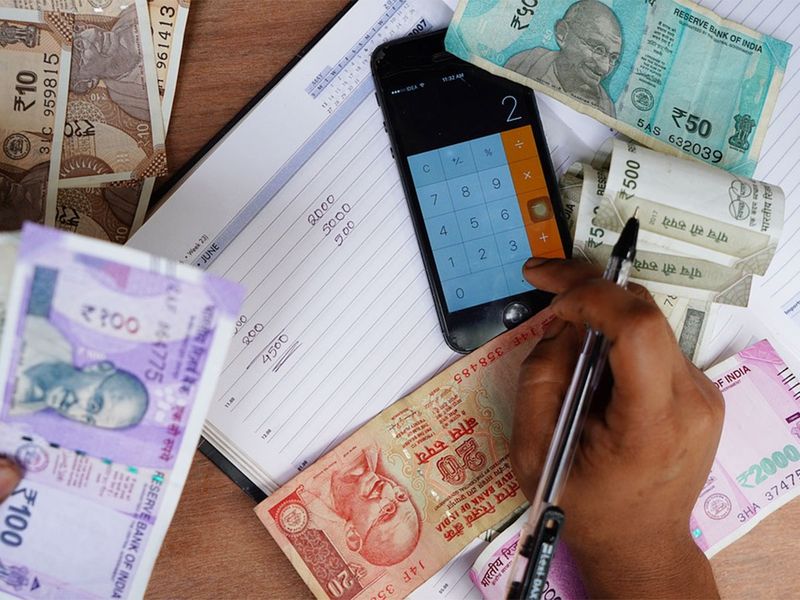
Experts reiterate that in the long run, ‘laddering’ is more likely to offer better returns, than say a long-term FD that comes with a premature withdrawal charge. So while the FD ‘laddering’ strategy can help you make the most out of bank FDs, care should be taken when prematurely withdrawing the FD.
“Ideally, you should select the tenure and the plan thoughtfully. If you are not sure about when you may need to withdraw your FD, look for banks that don’t charge a premature penalty,” advised Abbas.
Also, when deciding whether or not one should opt for a floating rate or a fixed rate FD, ‘floating’ is a key benefit for investors, especially for NRIs who are worried about the effect of rising interest rates on their savings.



